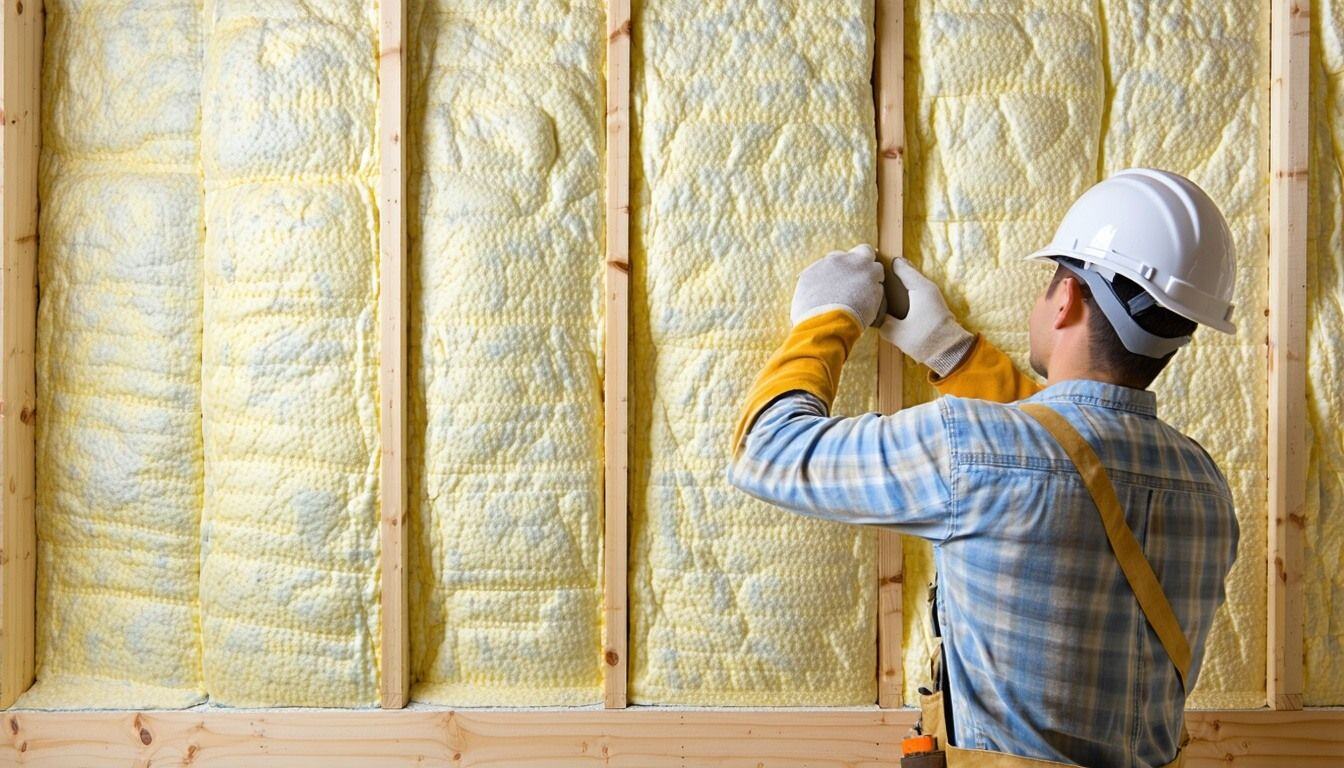Buying Insulation: Avoid These Costly Mistakes


Mistakes happen, but when you're buying insulation for your home, the wrong choice can cost you big time.
Choosing the cheapest insulation, buying too much, or not researching your options thoroughly are just a few of the missteps homeowners make when purchasing insulation products.
We here at RetroFoam of Michigan pride ourselves in educating the homeowners we work with from the very beginning of their insulation buying journey.
In those continued efforts, we will highlight the top 11 insulation buying mistakes.
Common Insulation Buying Mistakes
To help you make an informed decision, we've outlines the top mistakes to avoid when buying insulation, ensuring you get the best performance for your investment.
Focusing Too Much on R-Value
R-Value is important, but it doesn't tell the whole story.
Many homeowners assume that a higher R-Value always means better insulation, but other factors play a crucial role. For example, spray foam insulation may have a lower R-Value compared to fiberglass or cellulose, but it creates a total air seal, preventing drafts and improving energy efficiency.
Prioritizing the Cheapest Option
While budget is always a consideration, buying cheap insulation can lead to higher long-term costs.
Traditional insulation materials like fiberglass and cellulose may seem affordable initially, but they often require maintenance or replacement. Premium insulation, like spray foam, offers durability and efficiency, making it a smarter investment in the long run.
Choosing the Wrong Insulation for Your Project
Not all insulation is created equal.
Before you buy insulation products, research different materials and their applications. Foam, fiberglass, and cellulose each have strengths and weaknesses, so make sure your choice aligns with your home's needs.
Read reviews, check manufacturer credibility, and consult professionals before making a purchase.
Failing to Research the Insulation Contractor
If you're hiring a contractor, do your homework first.
Look for reviews on Google, Facebook, and Yelp. Check their experience level and see if they specialize in a particular insulation type.
A reputable contractor will be transparent about their process and provide clear answers to your questions.
Attempting a DIY Insulation Project
While DIY projects can be cost-effective, insulation isn't always a job for amateurs.
Without proper training, you risk gaps in coverage, improper installation, and even safety hazards. If mistakes are made, you might end up hiring a professional to fix them -- doubling your costs.
Assuming Insulation Solves Pest Problems
Insulation can help reduce pest entry points, but it's not a cure-all.
If you have an existing pest issue, address it before installing new insulation. Sealing entry points and eliminating infestations should be your first step before upgrading your home's insulation.
Expecting Insulation to Fully Soundproof a Room
While insulation can dampen sound, it won't completely soundproof a room.
If noise reduction is a primary concern, you'll also need soundproofing materials like acoustic panels, caulk, and additional drywall.
Buying Too Much Insulation
More insulation doesn't always mean better performance.
Over-insulating can lead to wasted materials and unnecessary expenses. THe key is to fill the space adequately -- extra layers don't improve efficiency and can even cause moisture issues.
Not Buying Enough Insulation
On the flip side, trying to save money by purchasing too little insulation can leave gaps that undermine efficiency.
Inadequate coverage means you'll continue facing the same temperature and energy issues that prompted the upgrade in the first place.
Using Flash and Batt to Meet Code
Flash and batt insulation -- using a thin layer of closed cell spray foam combined with fiberglass batts -- might seem like an easy way to meet building codes, but it's not always effective.
A single inch of closed cell foam doesn't provide a proper air seal, and the added fiberglass may not deliver the performance you expect. Instead, opt for two inches of closed cell spray foam to achieve both air sealing and thermal performance.
Delaying Your Insulation Project
Waiting too long to upgrade your insulation can worsen existing problems.
If your insulation is damaged by moisture, mold can develop, posing health risks to your family. Plus, the longer you wait, the more money you'll waste on high energy bills.
Choosing the Right Insulation
Now that you know the common insulation buying mistakes, you can avoid making them in your own home.
Investing in the right insulation ensures year-round comfort and long-term savings.
With the right research and professional guidance, you can confidently buy insulation that meets your home's needs.
To explore insulation options, check out our article: Foam vs. Fiberglass vs. Cellulose: Which Insulation is Best for My Existing House?
Key Points:
- Don't rely solely on R-Value -- consider air sealing and durability.
- Buying cheap insulation often leads to higher long-term costs.
- Choose the right type of insulation for your specific project.
- Research your contractor before hiring.
- DIY insulation projects can lead to costly mistakes.
- Insulation alone won't completely soundproof a space or solve pest problems.
- Buying too much or too little insulation affects efficiency and cost.
- Delaying your insulation project can lead to higher energy bills and potential health hazards.
Related Articles
Buying Cheap Home Insulation? Consider These 7 Things Before You Sign the Contract
R-Value vs Air Seal: What is More Important When Buying New Insulation?
How to Find and Hire the Best Residential Insulation Contractor for Your Project
About Amanda Emery
Amanda previously has worked as a breaking news and crime reporter, TV news producer, and editor in Flint and Detroit. Throughout her career as a journalist, she has won several awards from The Society of Professional Journalists - Detroit Chapter and the Michigan Press Association. As part of the RetroFoam of Michigan family, Amanda uses her experience as a journalist to write content that will help educate homeowners on the benefits of foam insulation. When Amanda isn’t writing, she’s spending time with her husband and rescued huskies. She also loves knitting, making art, cooking, and hosting dinner and a movie night for friends and family.


